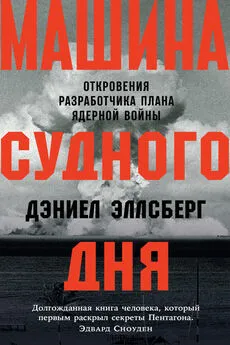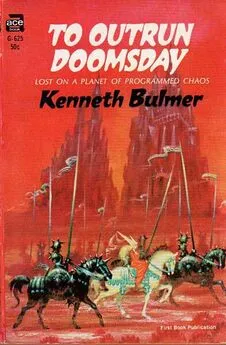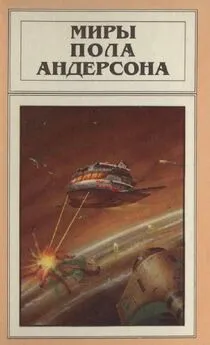Дэниел Эллсберг - Машина Судного дня. Откровения разработчика плана ядерной войны
- Название:Машина Судного дня. Откровения разработчика плана ядерной войны
- Автор:
- Жанр:
- Издательство:Литагент Альпина
- Год:2018
- Город:Москва
- ISBN:978-5-9614-1249-9
- Рейтинг:
- Избранное:Добавить в избранное
-
Отзывы:
-
Ваша оценка:
Дэниел Эллсберг - Машина Судного дня. Откровения разработчика плана ядерной войны краткое содержание
Машина Судного дня. Откровения разработчика плана ядерной войны - читать онлайн бесплатно ознакомительный отрывок
Интервал:
Закладка:
122
Вот и пришло время окончательного решенияСм. там же, с. 47–48.
123
Заседание продолжилось.См. там же, с. 49–50.
124
Шумков не знал, намеревался ли эсминецСм. Svetlana V. Savranskaya, “New Sources on the Role of Soviet Submarines in the Cuban Missile Crisis,” Journal of Strategic Studies , 28, no. 2 (2005) 233–259; Peter A. Huchthausen, October Fury (Hoboken, NJ: John Wiley & Sons, Inc., 2007).
125
Когда они забросали нас этими гранатамиСм. Aleksandr Fursenko and Timothy Naftali, Khrushchev’s Cold War: The Inside Story of an American Adversary (New York: W. W. Norton & Company, 2006), 487, citing a BBC Scotland interview with Shumkov.
126
Шумков отрезалСм. Huchthausen, October Fury , 210.
127
всеми силами пыталась выявить какие-нибудь нарушенияСм. Savranskaya, “New Sources on the Role of Soviet Submarines in the Cuban Missile Crisis,” quoting Dubivko, “In the Depth of the Sargasso Sea” 321n32.
128
Какое-то время мы довольно успешно уходили от них.См. Document #7, Recollections of Vadim Orlov (USSR Submarine B-59), “We Will Sink Them All, But We Will Not Disgrace Our Navy,” Alexander Mozgovoi, The Cuban Samba of the Quartet of Foxtrots: Soviet Submarines in the Caribbean Crisis of 1962 (Moscow: Military Parade, 2002). Translated by Svetlana Savranskaya in The Underwater Cuban Missile Crisis: Soviet Submarines and the Risks of Nuclear War , National Security Archive Electronic Briefing Book No. 339, edited by Tomas Blanton, William Burr, and Svetlana Savranskaya, October 24, 2012, nsarchive.gwu.edu/NSAEBB/NSAEBB399/.
129
Там наверху, может быть, уже идет войнаСм. Recollections of Vadim Orlov, “We Will Sink Them All, But We Will Not Disgrace Our Navy,” in Mozgovoi, The Cuban Samba of the Quartet of Foxtrots .
130
«человеком, спасшим мир»Это также название документального фильма компании PBS 2012 г., где цитируется Томас Блантон из National Security Archive.
131
«легко принят» по ошибке «за бомбардировщик с ядерным оружием со всеми вытекающими последствиями»Официальное сообщение премьера Хрущева президенту Кеннеди об окончании ракетного кризиса 28 октября 1962 г. см. в The Cuban Missile Crisis, 1962: A National Security Documents Reader , eds. Laurence Chang and Peter Kornbluh (New York: New Press, 1998), 238.
132
Всегда найдется сукин сынСм. Roger Hilsman, quoted in Michael Dobbs, One Minute to Midnight: Kennedy, Khrushchev, and Castro on the Brink of Nuclear War (New York: Alfred A. Knopf, 2008), 269–270.
133
Генералы жаждут сражения.См. Evan Tomas, Robert Kennedy: His Life (New York: Simon & Schuster, 2000), 227.
134
Что беспокоило его больше всегоСм. Kennedy, Thirteen Days , 84.
135
Господин президент, мы с вами не должны тянуть за концы веревкиПисьмо Хрущева в адрес Кеннеди, 26 октября 1962 г., перевод Госдепартамента, см. в Chang and Kornbluh, The Cuban Missile Crisis , 198.
136
Когда я спросил военных советников, могут ли они гарантироватьСм. Norman Cousins, “Editorial: The Cuban Missile Crisis: An Anniversary,” Saturday Review , October 15, 1977.
137
Откуда начинается дорога к концу света?Ниже приведен неполный перечень источников, к которым я обращался в поисках информации об истоках бомбардировок вообще, и англо-американской бомбардировки Германии, а также об американской бомбардировки Японии в частности. В дополнение к уже упомянутым в книге источникам см.: Conrad C. Crane, Bombs, Cities, and Civilians: American Airpower Strategy in World War II (Lawrence: University Press of Kansas, 1993); Richard Overy, The Bombers and the Bombed: Allied Air War Over Europe, 1940–1945 (New York: Viking, 2013); Hermann Knell, To Destroy a City: Strategic Bombing and Its Human Consequences in World War II (Cambridge, MA: Da Capo Press, 2003); Randall Hansen, Fire and Fury: The Allied Bombing of Germany, 1942–1945 (New York: NAL Caliber, 2009); Alexander McKee, Dresden 1945: The Devil’s Tinderbox (New York: Dutton, 1982); Ronald Schaffer, Wings of Judgment: American Bombing in World War II (New York: Oxford University Press, 1988); A. C. Grayling, Among the Dead Cities: The History and Moral Legacy of the WWII Bombing of Civilians in Germany and Japan (New York: Walker & Company, 2006); Keith Lowe, Inferno: The Fiery Destruction of Hamburg, 1943 (New York: Scribner, 2007); Jorg Friedrich, The Fire: The Bombing of Germany, 1940–1945 (New York: Columbia University Press, 2006); Erik Markusen and David Kopf, The Holocaust and Strategic Bombing: Genocide and Total War in the Twentieth Century (Boulder, CO: Westview Press, 1995); Susan Griffin, A Chorus of Stones: The Private Life of War (New York: Anchor Books, 1993); Sven Lindqvist, A History of Bombing (New York: New Press, 2001); John Dower, War Without Mercy: Race and Power in the Pacific War (New York: Pantheon, 1986); Charles Griffith, The Quest: Haywood Hansell and American Strategic Bombing in World War II (Alabama: Air University Press, 1999); Haywood S. Hansell, The Strategic Air War Against Germany and Japan (Washington, D.C.: Office of Air Force History, United States Air Force, 1986); Tami Davis Biddle, Rhetoric and Reality in Air Warfare: The Evolution of British and American Ideas About Strategic Bombing, 1914–1945 (Princeton, NJ: Princeton University Press, 2002); Robert Pape, Bombing to Win: Air Power and Coercion in War (Ithaca: Cornell University Press, 1996); Mike Davis, “Berlin’s Skeleton in Utah’s Closet,” in Dead Cities: And Other Tales (New York: New Press, 2002), 65–84.
138
Бесчеловечная бомбардировка с воздуха мирных гражданСм. Franklin D. Roosevelt, “An Appeal to Great Britain, France, Italy, Germany, and Poland to Refrain from Air Bombing of Civilians,” September 1, 1939, www.presidency.ucsb.edu/ws/?pid=15797.
139
вести боевые действия с твердым намерениемСм. John Finnis, et al., Nuclear Deterrence, Morality and Realism (New York: Oxford University Press, 1987), 39.
140
Великобритания включила эти три принципаСм. там же цитирование слов сэра Джона Слессора из The Central Blue: Recollections and Reflections by Marshal of the Royal Air Force (London: Cassell and Co., 1956), 213; “Protection of Civilian Populations Against Bombing From the Air in Case of War,” League of Nations Resolution, September 30, 1938, www.dannen.com/decision/int-law.html#d.
141
первой устрашающей бомбардировкой гражданского населенияСм. Barbara Tuchman, Stilwell and the American Experience of China, 1911–1945 (New York: Macmillan, 1971), chapter 5.
142
Оригинал на английском языке лежал в небытиеСм. Herbert Mitgang, “Article Hemingway Wrote for Pravda in ’38 Is Published in English,” New York Times , November 29, 1982. Статья была опубликовано в газете Правда 1 августа 1938 г. под заголовком «Человечество этого не простит!». Английский вариант увидел свет в 1982 г. с предисловием, написанным Уильямом Уотсоном.
143
абсолютно опустошающие, уничтожающие удары См. Finnis, et al., Nuclear Deterrence, Morality and Realism , 44. Добавлен курсив.
144
Мы отплатим вам в стократном размереСм. F. M. Sallagar, The Road to Total War: Escalation in World War II , R-465-PR (Santa Monica, CA: RAND Corporation, April 1969), 111.
145
Послушайте, в эту окружность попало не так уж и много бомб.См. Freeman Dyson, Disturbing the Universe (New York: Harper & Row, 1979), 26.
146
При стратегической бомбардировке гражданское населениеСм. Sallagar, The Road to Total War , 128.
147
Командование бомбардировочной авиации в лице главнокомандующегоСм. там же.
148
широко использовать зажигательные средстваСм. там же, 129.
149
американский иезуит Джон Форд и британская пацифистка Вера БриттенСм. John C. Ford, S.J., “The Morality of Obliteration Bombing,” Theological Studies 5, no. 3 (September 1944): 261–309; Vera Brittain, Seeds of Chaos (London: New Vision Publishing Co., 1944); Vera Brittain, One Voice: Pacifist Writings from the Second World War (London: Continuum, 2005). Бомбардировки также решительно осуждал англиканский епископ Джордж Белл. См. Andrew Chandler, “The Church of England and the Obliteration Bombing of Germany in the Second World War,” The English Historical Review 108, no. 429 (1993): 920–946.
150
Основной задачей ваших операций отныне становитсяСм. там же, с. 155–56.
Читать дальшеИнтервал:
Закладка:










